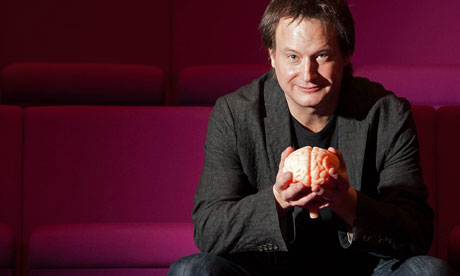Scientists have revealed that the sizes of the posterior and anterior segments of
the hippocampus could predict individual's ability to remember past
events. Hippocampus is an important brain structure associated with
recollection memory.
They found that a larger posterior hippocampus and a smaller anterior hippocampus were associated with better recollection.
Although research has generally linked smaller hippocampi with worse recollection in neuropsychological patients and during aging, this relationship has not held up among healthy young adults.
"There is some evidence that extensive spatial memory acquisition leads to enlargement of the posterior hippocampus and a decrease in the anterior hippocampus," explained lead study author, Dr. Jordan Poppenk who conducted the study at Baycrest's Rotman Research Institute.
"This suggested to us that the crucial predictor of individual differences in recollection ability might not be the overall size of the hippocampus but the separate contributions of the posterior and anterior segments of the hippocampus," he said.
Dr. Poppenk and co-author Dr. Morris Moscovitch analysed high-resolution magnetic resonance imaging brain scans of healthy adults who had participated in recollection memory tests.
The result showed that better recollection was linked with a larger posterior hippocampus and a smaller anterior hippocampus.
The overall size of the hippocampus did not predict recollection, as larger posterior hippocampi were offset by smaller anterior hippocampi.
The researchers went on to show that the link between the posterior hippocampus and recollection depended on interactions with other parts of the brain between the times that memories were learned and retrieved, particularly regions involved in perception which form the basis of recollected experience.
"Our results show for the first time that the size of the posterior hippocampus, especially when expressed as a ratio to the size of the anterior hippocampus, reliably predicts recollection in healthy adults," Dr. Poppenk stated.
"This finding explains the longstanding failure to correlate the overall size of the hippocampus with memory.
"We also provide evidence that it is the functional connections, possibly related to memory consolidation, between the posterior hippocampus and other parts of the brain that may underlie enhanced memory recollection," he added.
They found that a larger posterior hippocampus and a smaller anterior hippocampus were associated with better recollection.
Although research has generally linked smaller hippocampi with worse recollection in neuropsychological patients and during aging, this relationship has not held up among healthy young adults.
"There is some evidence that extensive spatial memory acquisition leads to enlargement of the posterior hippocampus and a decrease in the anterior hippocampus," explained lead study author, Dr. Jordan Poppenk who conducted the study at Baycrest's Rotman Research Institute.
"This suggested to us that the crucial predictor of individual differences in recollection ability might not be the overall size of the hippocampus but the separate contributions of the posterior and anterior segments of the hippocampus," he said.
Dr. Poppenk and co-author Dr. Morris Moscovitch analysed high-resolution magnetic resonance imaging brain scans of healthy adults who had participated in recollection memory tests.
The result showed that better recollection was linked with a larger posterior hippocampus and a smaller anterior hippocampus.
The overall size of the hippocampus did not predict recollection, as larger posterior hippocampi were offset by smaller anterior hippocampi.
The researchers went on to show that the link between the posterior hippocampus and recollection depended on interactions with other parts of the brain between the times that memories were learned and retrieved, particularly regions involved in perception which form the basis of recollected experience.
"Our results show for the first time that the size of the posterior hippocampus, especially when expressed as a ratio to the size of the anterior hippocampus, reliably predicts recollection in healthy adults," Dr. Poppenk stated.
"This finding explains the longstanding failure to correlate the overall size of the hippocampus with memory.
"We also provide evidence that it is the functional connections, possibly related to memory consolidation, between the posterior hippocampus and other parts of the brain that may underlie enhanced memory recollection," he added.


 Washington:
A team led by an Indian-origin neuroscientist has found a gene that
"turns on" when memories are stored in the brain, a discovery they
believe could help pinpoint the exact locations of memories in the
brain.
Washington:
A team led by an Indian-origin neuroscientist has found a gene that
"turns on" when memories are stored in the brain, a discovery they
believe could help pinpoint the exact locations of memories in the
brain.




